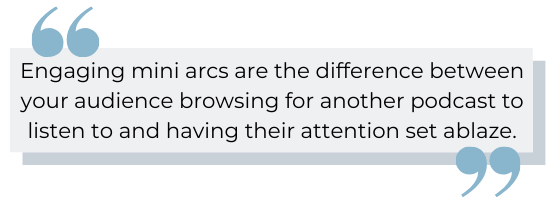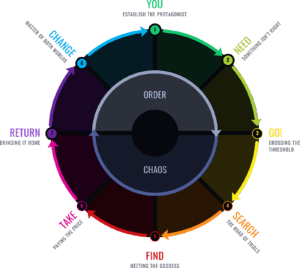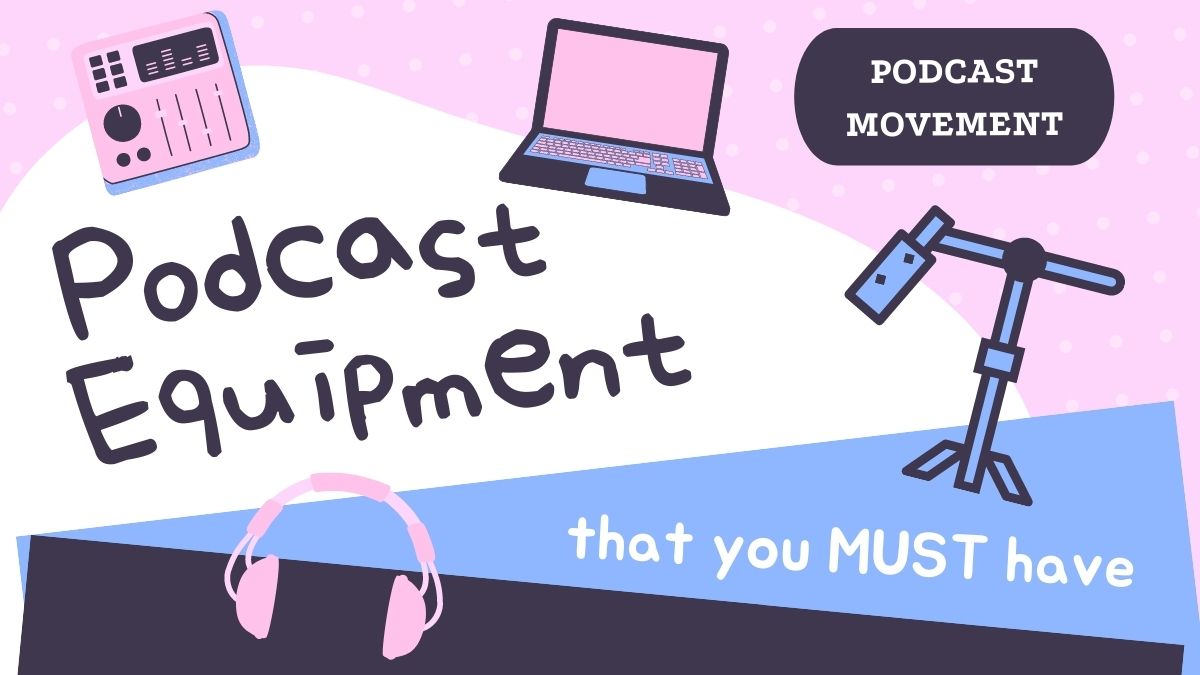An engaging story isn’t a straight line running from its inciting incident to resolution — it’s an EKG with ups and downs through which you can visualize the pulse of a story.
Within these highs and lows lie mini arcs. These mini arcs can take place within a scene or across multiple scenes in a sequence, and are built just like a classic story arc with a setup, a series of trials, and a resolution. They’re foundational in theory, but engaging mini arcs are the difference between your audience browsing for another podcast to listen to and having their attention set ablaze.
![]()
What Happens in a Mini Arc?
The main story arc — the one that takes places over the course of your entire story — answers the major dramatic question posed in your narrative. For example, the major dramatic question in Pixar’s Up is “Will Carl finally come to terms with the death of his wife?” The major dramatic question in Home Alone is “Will Kevin learn to appreciate his family?”

Mini arcs are smaller arcs within the bigger story that propel the narrative forward without answering the major dramatic question. They often make the audience lean in and wonder — sometimes audibly — what the hell is going to happen next.

Mini arcs can answer minor dramatic questions posed in your story, offer new clues, build the foundation of unforgettable plot twists, and put your characters on a crossroads to learning about themselves and the world around them.
![]()
What are Mini Arcs Made Of?
Mini arcs are constructed just like your main story arc, complete with:
![]() Inciting incident
Inciting incident
![]() Progressive complications
Progressive complications
![]() Crisis
Crisis
![]() Climax
Climax
![]() Resolution
Resolution
Dan Harmon, creator of “Community” and co-creator of “Rick and Morty,” takes a slightly different approach to the arc of a story with his story circle:

You don’t have to follow a story arc structure, but you’d benefit from having one. Fact or fiction, the majority of stories understand (and sometimes break) the rules of a story arc. Bottom line: Like main story arcs, mini arcs are comprised of a setup, trial, and resolution.
Ebb, Flow, and the Teeth of Change
Mini arcs are fuel for the larger arc and create an ebb and flow throughout your story. If your story is all action, the loudness loses its impact. Your story needs quiet scenes to act as the foil to the big set pieces. We need moments to breathe so our breath can be taken away.
Build tension through conflict. Release. Repeat.
Mini arcs must contain conflict and this conflict must lead to change. Whether it’s a major change in the direction of the story or a minor shift in a character’s perspective, conflict is measured by degrees of change. If there’s a conflict in your story that doesn’t cause change, then heads up: It wasn’t a conflict at all. It was a sheep in wolves’ clothing. Give your mini arcs bite by having them cause change.
![]()
Tips for Finding Conflict
Luckily for us storytellers, conflict is everywhere. It’s in the chance encounter with a stranger at the supermarket. It’s in getting the kids to bed. It’s in ourselves, every day of our lives, growing in the cracks of the things we need to face but instead choose to ignore. But while in the creative trenches of building a narrative, we can lose sight of these bountiful wells. When you need to find conflict, try tapping into these four sources:
1. Character's Backstory
“The interesting thing about inner demons—our issues—is the fact that the drama ensues no so much from them, but from our ability to cope with them. The inner demons of criminals and psychopaths are often not that much different than those afflicting the rest of us, they just deal with them in spectacular and often horrifying ways.”
— Larry Brooks, Story Engineering: Mastering the 6 Core Competencies of Successful Writing
2. External Events
There’s a whole heap of events ripe with the scent of conflict awaiting you inside the story you’ve already created — you just might not have recognized them yet. As an example: While I was producing a podcast about a woman who ran seven marathons on seven continents in seven days, she (Lisa Davis) mentioned Oprah as a reason for getting into marathon running. It turns out Oprah ran the Marine Corps. Marathon and Lisa, who is a Marine, thought, ‘Well if Oprah can do it, I can do it.' This external event turned into a mini arc inside the larger arc of her struggle to complete a series of worldwide marathons.
3. Secondary Characters
That cashier in the opening scene? The brother-in-law we’ve never seen but is mentioned several times in passing? These are the types of characters that can inject drama into your story, giving rise to new mini arcs within your narrative. Never forget them.
4. Positive Development
“Discomfort isn’t always rooted in a negative development: Wall-E’s peaceful routine is upended by Eve’s arrival. While it’s great that he’s no longer alone, Wall-E must now devise ways of winning over Eve’s heart, or risk missing this opportunity to fulfill his dreams, possibly the last chance he’ll get.”
— Dean Movshovitz, Pixar Storytelling: Rules for Effective Storytelling Based on Pixar’s Greatest Films
To give your story a pulse, practice mastering the mini arc. You’ll find each of your scenes will have more purpose and every sequence will tighten the screw on your story’s journey toward its riveting conclusion.
![]()
Key Takeaways
![]() Give your story a pulse with mini arcs—ups and downs like an EKG
Give your story a pulse with mini arcs—ups and downs like an EKG
![]() 5 pieces of an arc: Inciting incident, progressive complications, crisis, climax, resolution
5 pieces of an arc: Inciting incident, progressive complications, crisis, climax, resolution
![]() Build tension through conflict. Release. Repeat.
Build tension through conflict. Release. Repeat.
![]() Give your mini arcs bite by having them cause change
Give your mini arcs bite by having them cause change
![]() Conflict fuels story arcs … and it’s everywhere
Conflict fuels story arcs … and it’s everywhere




Join the Movement